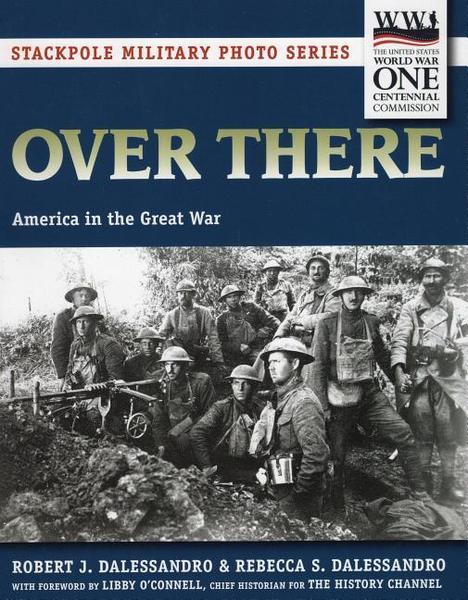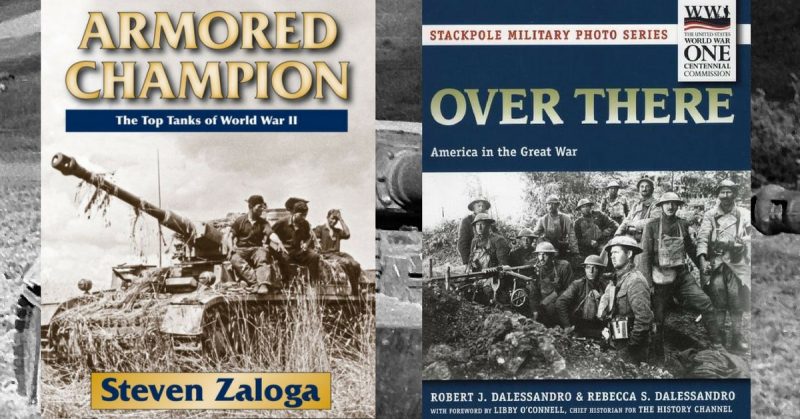Stackpole Books have a reputation for some really good archive photo and general history books and here are two very different titles I am pleased to recommend.
First up is Armored Champion by the ever-dependable Steven Zaloga. Here he takes a look at the broad history of tank warfare during World War II by concentrating on the development and use of the weapon by the major belligerents and some of their allies. This book feels comprehensive in style and presentation and, I have to say, as a single volume tank book it really cuts the mustard.
Mr. Zaloga doesn’t get hung up on specific models or nationalities and there is none of the subjectively iffy best or greatest about this book. While the strapline on the cover says The Top Tanks of World War II this really is just publishers blarney and the book itself is much more sober and substantial than the title might suggest. The author looks at all the concepts for tank doctrine used by the major powers fighting the war so you can expect to see some of the white elephants and dogs breakfasts dreamed up by people who might have known better. These act as an antidote to the inevitable procession of workmanlike and iconic tanks from the war. I won’t bother with lists; you know what you like.
Mr. Zaloga makes prescient observations about the tanks in service with the British and French in 1939 and how it wasn’t so much quality but the way these tanks were used that doomed them to fail. I have used shallow end of the tank park to describe my superficial love for particular models based on nothing more than looks and incongruity and the French win hands down at this, with some of the bonkers Russian stuff running a close second. It sometimes defies belief to see how the Russians made the leap from flimsier designs to the T34, but this book emphasises just how brilliant it was and, crucially, how improvements and a degree of simplification worked hand in hand to make it such a winner. The antithesis to all this was happening in Germany where tanks became more complicated and temperamental at the worst time for the Nazis. They really should have kept things simple.
The Sherman, like the T34, did not stand still and as the western allies principle war-winning tank it proved to be adaptable and functional. It’s modular construction improved with combat and maintenance experience and this sort of tank philosophy has extended from World War II to the present day. The British were constantly struggling with doctrine, concepts and the need to build lots of anything to satisfy many different masters ruling their war effort. This is shown in the blizzard of designs that made it into production from the much-loved Matilda II to the brutal Challenger. I’ve been working on several archive images of these thugs recently and have to say I have come to like them even though only two hundred were built. The Challenger fell victim to the practicality and availability of the Sherman Firefly.
Ok, I could witter on about my favourite tanks all day. This book saves me bothering. If you are looking for a single volume book on tank warfare from WW2, this one might just be all you need.
If you are in need of visual refreshment amid the welter of Great War centennial dirge, look no further than Over There by Robert and Rebecca Dalessandro. This is a straightforward archive photo book of a type Stackpole have been knocking out for years.
The book is devoted to telling the story of America during the Great War and while it has much of the ingredients you might expect, it also manages quite a few surprises. The authors have done their research well and have turned up some brilliant stuff to go with some oft-used classics. They confront segregation and the roles of women, and this all makes for a genuinely inclusive history. Books like this really please me, and I love the fact there is no messing about. The pictures are allowed to speak for themselves and the chapters all work really well.
The book comes with an impressive colour section filled with a fantastic selection of original war art accompanied by wartime posters. This is supported by images of weapons and equipment, a standard treatment for Stackpole; but, nevertheless, it has been handled with great care. Maps and contemporary cartoons all add to the mix, but it is the photography that matters most and I found the whole thing quite captivating.
The book is essentially a celebration of America’s achievements during the Great War and this is no bad thing. So much of the WW1 book market is mired on the Somme and Passchendaele, and it is important to remember there was a wider war going on.
Back in April, I was on a battlefield tour of Verdun led by Christina Holstein. We came out of a wood filled with the ghosts of bunkers, unexploded shells and a small number of food tins left over from the end of the war. We stood at the tree line looking down into a valley at a small village. Christina told us about a man from New York who had been a clerk with an American unit on the 11th of November 1918 when he was instructed to type out a message to the effect that the Armistice would begin in just twenty minutes time from when he was typing. The Americans were still attacking right up to 11 am. Their war weary allies were generally much less enthusiastic. We had other fish to fry, but I would like to walk down into that village one day. I haven’t visited any of the large memorials for US forces on the old front line, and it is an omission I may get to rectify this autumn.
Meantime this wonderful book will continue to impress me. If you are interested in the American contribution to victory over the Kaiser or just want something different from all the usual stuff, this book will not disappoint.
Reviewed by Mark Barnes for War History Online.

ARMORED CHAMPION
The Top Tanks of World War II
By Steven Zaloga
Stackpole Books
ISBN: 978 0 8117 1437 2

OVER THERE
America in the Great War
By Robert J Dalessandro & Rebecca S Dalessandro
Stackpole Books
ISBN: 978 0 8117 1485 3
